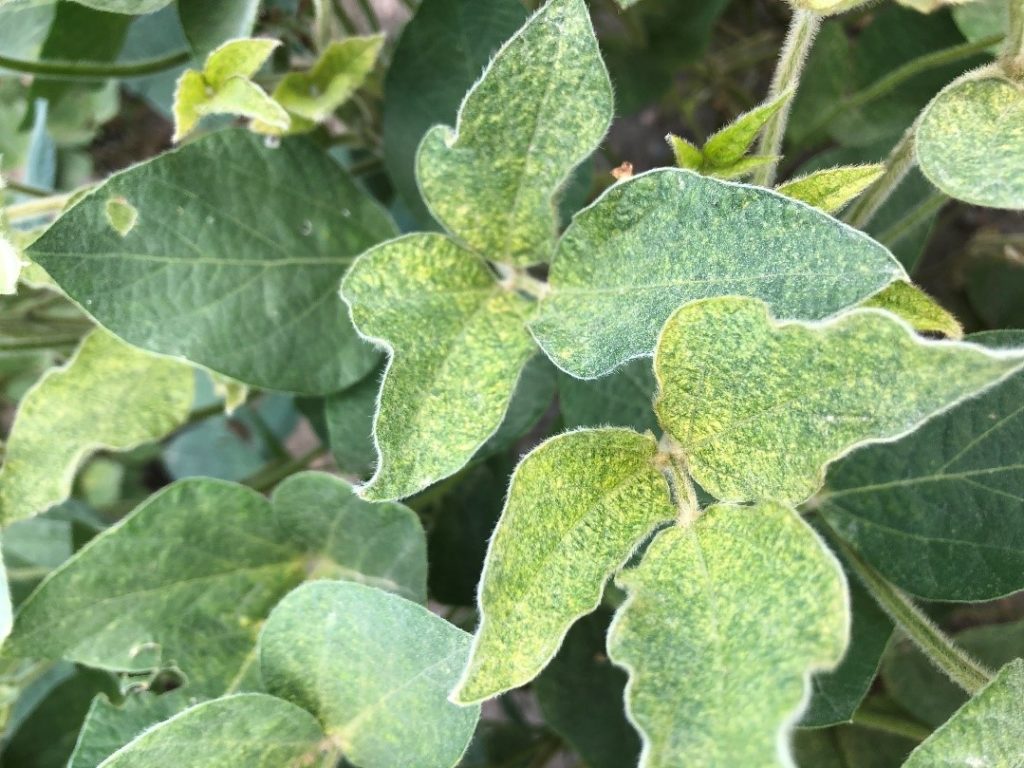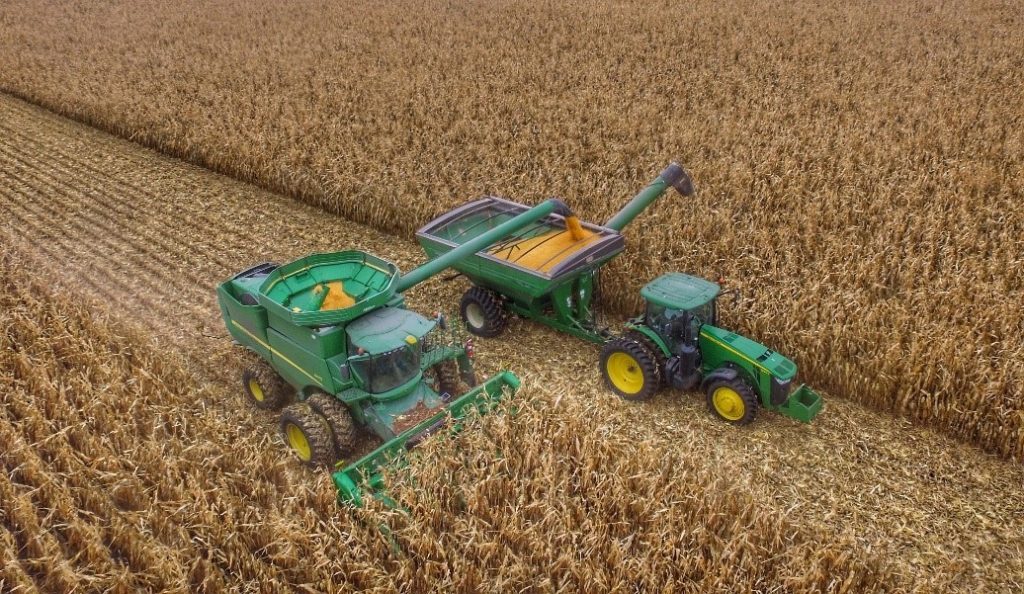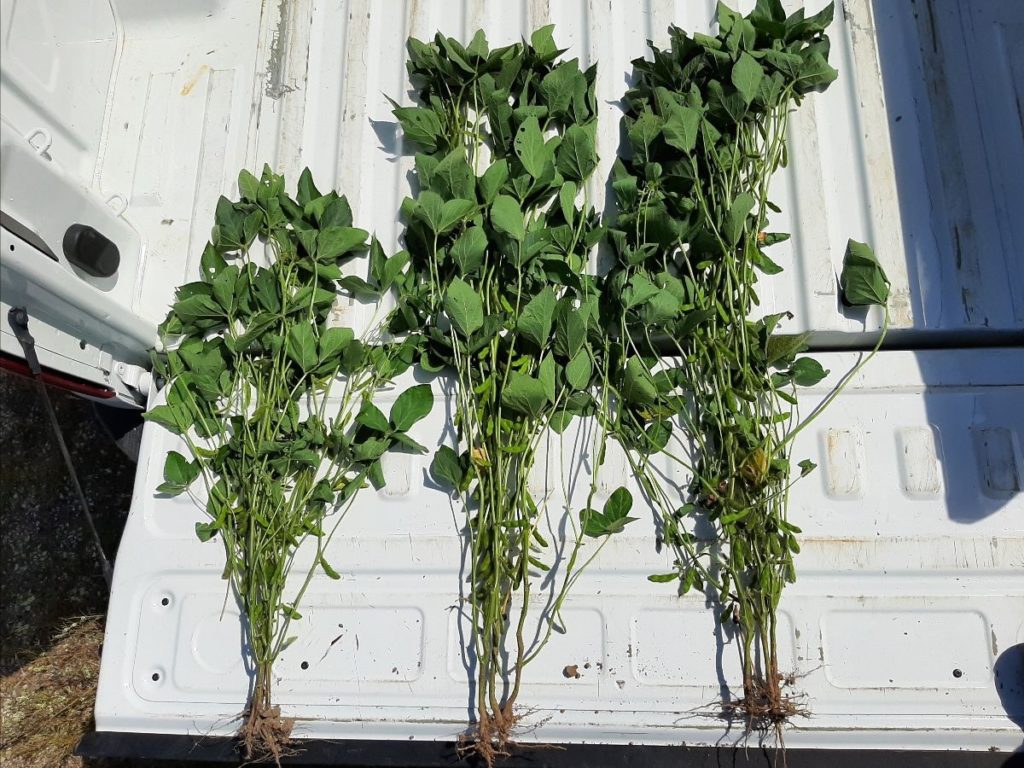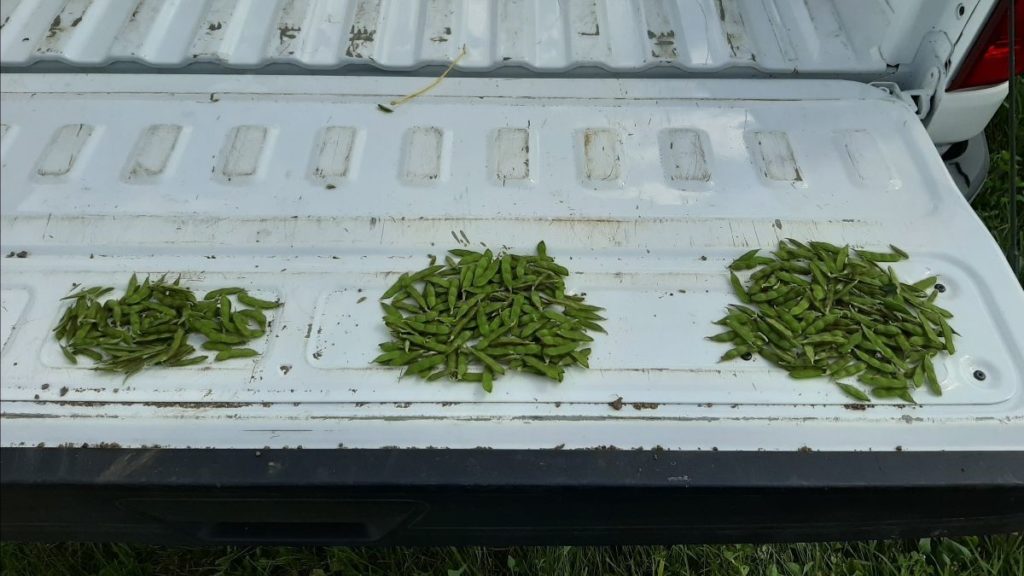Your Local Weekly Ag Partners Agronomic Update.
The one-stop-shop to hearing everything you need to know this week about what is happening in your fields.
This week’s featured agronomists are:
Austin Schultz- Le Center
Erin Goebel – Owatonna
Justice Keefauver – Lewiston
Chace Kinneman- Ellsworth
Scroll down to hear from your local agronomist.
Stay Tuned: Your Weekly Agronomy Newsletters
will become bi-weekly until harvest begins.
West
Belle Plaine – LeCenter – LeSueur
|
Austin Schultz |
Here on the West-Side of Ag Partners, we have been busy scouting for insects in corn and beans. Although we have not been seeing a ton of insects so far this year, there are a few instances of some spider mites and aphids coming in the soybeans. The spider mites are not typically an insect we look for or have seen much of over the last few years, but they made a comeback this year in some isolated pockets. For those of you unfamiliar with the insect, here’s some information you might find useful when scouting for them: |
- Spider mites typically migrate in along the field edge from grassy strips
- Spider mites thrive in dry-hot conditions
- They are a small sucking insect that suck the content out of the leaf cell, leaving them looking white/yellow in severe cases of infestation
When scouting for spider mites, it is easiest to start along a field edge where the insect may be present or where you could see signs of their feeding. It is beneficial to bring along a piece of white paper to hold under the plant and shake the tiny insect off. They are very difficult to see on the bottom side of the leaf, so shaking them off onto a piece of paper will help you make a determination as to how severe the infestation is. Once you shake them onto the paper, you can look for little orange dots moving on the paper. When considering when to spray, start on the field edge where spider mites are present and then move about 100 yards into the field, to see if they are present there in smaller quantities. If they are present, an insecticide application may be necessary; if they are not, continue this scouting practice until either the insects move-on or they reach the threshold level.
Central
Kenyon – Morristown – Owatonna
|
Erin Goebel |
AUGUST in AYS August is a busy month for AYS Specialists, as we are starting to wrap up all the 2020 data entry and preparing for combines to hit the field. Getting all the data entered into the system before combines get rolling is very important. If growers have Wireless Data Transfer in their equipment, it allows us to start analyzing harvest data as soon as the field is finished. This helps your AYS Specialists get a head start on analyzing the data, versus receiving an overwhelming amount of data to enter at the end of harvest. |
TRIALS
Do you have trials setup on your farm for the 2020 crop year? Does your AYS Specialist know where these are located? If not please reach out to your AYS Specialist now to go over where your trials are located. Having a harvest plan going into fall on where all trials are allows us to get that data back to you on a more timely matter to utilize it for the 2021 crop preparation.
Good Luck on the 2020 Harvest Season and remember if you have any issues please do not be afraid to call your AYS Specialist for help!
South
Lewiston
|
Justice Keefauver |
As third crop is coming to an end, its nice to remember how fortunate we were locally with adequate moisture and solar radiation to produce high tonnage 1st and 2nd crops with appropriate quality. Fungicide came to an end last week on both corn and beans. This year like the last couple is unique in nature. The last couple of years we have seen profitable responses to utilizing a fungicide on both corn and beans locally on above average moisture years. |
This year after tassel much of the area has seen spotty to absent rainfall resulting in dry soil conditions. We need to remember that fungicides are more then just an option to control fungi, but also a plant health beneficiary. The plant health component helps our crops respirate moisture and nitrogen effectively longer into the growing season. With current dry conditions I believe we will see a high response to management with a fungicide.
I have heard in the last week from many about how we are desperate for a rain. Has anyone seen the bottom leaves start to “fire up?” the bottom leaves in some corn fields are starting to exhibit nitrogen deficiency due to dry conditions. Again, this is a good time to ask ourselves questions such as: did I put enough nitrogen on my field relative to my yield goals? Did I protect my Nitrogen and if not, should I have? What can I do differently next year to mitigate my risk of nitrogen loss?
Spider Mites! Many in the area have not seen aphid pressure in soybeans until very recent, but that is not the only threat to our crop. Spider mites often show up in hot dry conditions, familiar right? Our agronomy team has been on the lookout for spider mites this week and plants are starting to show stress due to feeding. It is not too late to make a proper application on these pests to help protect our yields. Contact your agronomist today and have the discussion. Pictured below is what spider damage looks like.
WWAS
Ellsworth
|
Chace Kinneman |
Corn is around R2-R3 and beans are at R4-R5 depending upon where you are at in the country. Aphids in the soybeans have been minimal to this point. You can definitely see differences down to the exact row where Endigo was sprayed earlier on and where it was not. There are no aphids in the earlier spray applications and aphids still coming in the unsprayed. Keep an eye out for leaf hoppers in the hay, as they are still plentiful in most places and worth spraying. Ask your local agronomist to sweep your fields to see if they are there. |
Pictured below are AG11X8 Asgrow beans and we used 3 plants per test
Left: No Seed Treatment = 99 pods
Center: Funigicide/Insecticide Seed Treatment =140 pods
Right: Funigicide/Insecticide Seed Treatment + R2 Funigicide = 164 pods













